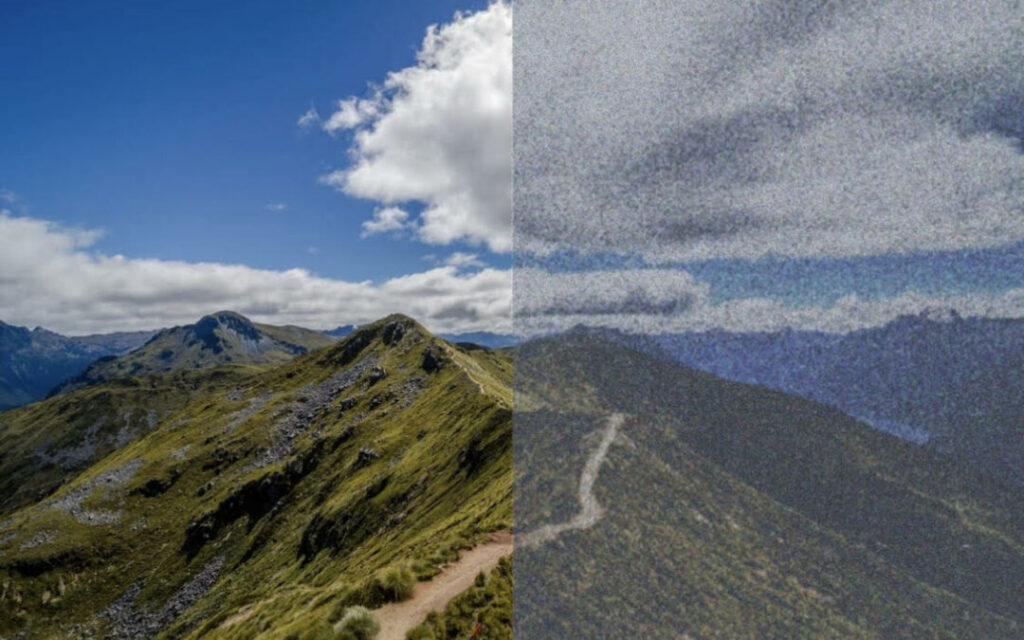English Translation of the Study
The neurological disorder Visual Snow Syndrome impairs vision
Visual Snow Syndrome: When the world “chrüslet”. Suddenly the field of vision changes – and the whole life: A patient describes her experiences with the new clinical picture – and neurologist Christoph Schankin clarifies.
My world started to “chrüsle” five years ago. From one moment to the next, small luminous dots danced before my eyes. It was as if someone had put a filter over my field of vision.
Out of sheer panic, I closed my eyes as tightly as I could. But the Chrüsle didn’t stop even with my eyes closed – and still doesn’t. At that time, no one could tell me what was wrong with me. Probably also because research had just begun to deal more intensively with this unusual clinical picture.
Consequently, my search for answers remained unsuccessful at that time. Google raised its hands cluelessly, as did the countless ophthalmologists I visited. Today the Chrüsle has given a name and one knows significantly more about it. “Visual snow syndrome, or VSS, is a clinical picture in which those affected suffer from persistent visual disturbances,” explains Christoph Schankin, head of the University Headache Clinic at the Neurological Clinic at the Inselspital in Bern.
Like Black & White Television
“Characteristic of this is an image noise that resembles a poorly adjusted analog black-and-white television or a snow flurry. You perceive countless tiny dots throughout the field of view, flickering back and forth between black and white.”
And the dancing dots have it all. They can be seen day and night – whether the eyes are open or closed.
Schankin adds, “Other complaints are so-called afterimages. An image just seen continues to persist in the field of vision, and moving objects trail a tail behind them.”
So Christmas, the festival of lights, is not exactly eye candy for me. “In addition, many VSS patients suffer from increased light sensitivity or intolerance, which causes some to avoid sunlight, computers, fluorescent as well as the light from car headlights,” says the Visual Snow Initiative from the U.S., which supports worldwide VSS research and fights for more awareness.
Currently, this visual disorder plagues about two to three percent of the world’s population. “Simple activities like reading, watching TV, computer work, driving or even just looking up at the sky become enormous challenges,” the initiative says. It can affect anyone. “Affected people are on average 20 years old at onset. Often they already suffer from migraine with aura, i.e. migraine attacks that are accompanied by brief visual disturbances. This includes seeing fleeting flashes, colored zigzag lines or visual field loss.” However, he said, the disorder has nothing to do with the eyes themselves. “We believe this is what is known as a network disease, where communication between different areas of the brain does not work properly. With that, it’s a brain dysfunction, not an eye dysfunction.” Medically “normal”
In other words, none of the usual ophthalmological tests show abnormal results, and affected individuals are classified as “normal.”
What does that mean for them? From their own experience, the white coats mostly furrowed their brows, exhaled slowly. Then it was, “And otherwise – how are you doing mentally?”
Not an unusual reaction, confirms Schankin: “Unfortunately, patients were often portrayed as malingerers or lunatics if the examination results were unremarkable. Today, this happens much less frequently.”
Causes for visual snow syndrome have not yet been clearly identified. However, Schankin clarifies, “A large proportion of patients with VSS suffer from migraine with aura.” The correlations would have to be researched more deeply. Neither cures nor symptom relief are currently in sight.
For this very reason, the neurologist says, it is important to create more awareness of VSS. “In research, we have already made very great progress. We can now diagnose affected individuals and enable targeted research on larger groups of patients. I’m confident we’ll be much further ahead in research in just a few years.”


